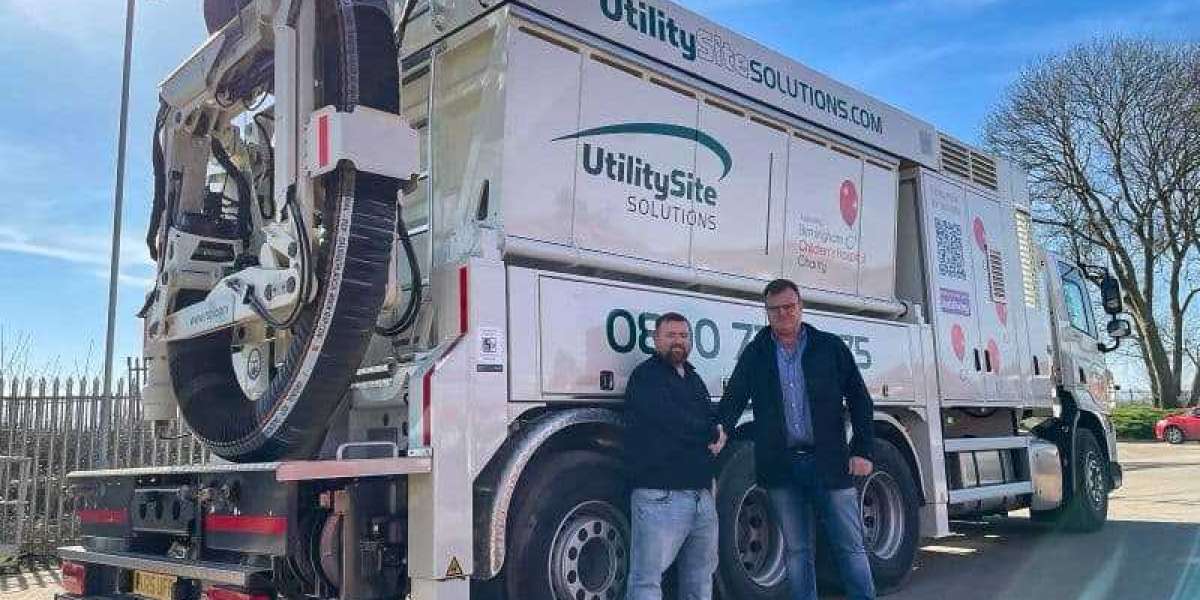In the construction and utility industries, the need for accurate and safe excavation techniques is paramount, especially when working around existing utilities such as gas, water, and electricity lines. Traditional excavation methods can pose significant risks, including damage to vital infrastructure, safety hazards for workers, and disruptions to local communities. However, vacuum excavation has emerged as a transformative solution that enhances safety and efficiency in utility excavation projects. This article explores how vacuum excavation supports safer utility excavation, its benefits, and its role in modern construction practices.
Understanding Vacuum Excavation
Vacuum excavation is a non-destructive digging method that utilizes high-pressure water jets to loosen soil, which is then removed by a powerful vacuum system. This technique allows for precise excavation while minimizing the risk of damaging underground utilities. Unlike traditional digging methods that rely on heavy machinery, vacuum excavation is designed to expose underground lines safely, making it particularly suitable for utility excavation projects.
The equipment used in vacuum excavation typically includes a vacuum tank, a water jetting system, and various attachments for different excavation tasks. This combination of tools allows contractors to excavate efficiently while adhering to safety protocols, making it an invaluable asset in the utility sector.
The Risks of Traditional Utility Excavation
Traditional utility excavation methods, such as using backhoes and excavators, can lead to several risks, including:
Utility Strikes: Accidental strikes on gas, water, or electrical lines can cause devastating consequences, including explosions, injuries, and service outages.
Cave-Ins: Excavations can become unstable, leading to cave-ins that pose significant risks to workers on-site.
Environmental Damage: Traditional excavation can disturb the surrounding environment, leading to soil erosion and contamination.
Project Delays: Damage to utilities can halt construction projects, resulting in costly delays and extended timelines.
Given these risks, the construction industry has turned to safer alternatives, with vacuum excavation emerging as a leading solution.
The Safety Benefits of Vacuum Excavation
1. Reduced Risk of Utility Strikes
One of the most significant advantages of vacuum excavation is its ability to reduce the risk of utility strikes. By using high-pressure water jets to loosen soil, contractors can expose underground utilities without the need for aggressive digging. This method allows for careful excavation around existing lines, significantly lowering the chances of accidental damage and enhancing overall safety.
Moreover, vacuum excavation equipment often features advanced technology that allows operators to detect and avoid utilities more effectively. This precision is crucial in urban environments where multiple utilities may be buried in close proximity to one another.
2. Enhanced Stability During Excavation
Vacuum excavation is designed to create stable and controlled digging conditions. The method's non-destructive nature minimizes soil disturbance, reducing the likelihood of cave-ins. In contrast, traditional excavation techniques can weaken the surrounding soil structure, increasing the risk of collapses.
By maintaining the integrity of the soil, vacuum excavation ensures a safer working environment for excavation crews. This stability is especially important in deep excavations, where the risk of cave-ins is inherently higher.
3. Improved Site Safety for Workers and the Public
Vacuum excavation contributes to safer job sites by reducing noise and dust compared to traditional methods. The quieter operation of vacuum equipment minimizes disturbances to nearby residents and businesses, fostering better community relations. Additionally, the reduced dust levels improve air quality on-site, creating a healthier environment for workers.
Safety barriers and signage can also be more effectively implemented around vacuum excavation sites, further protecting workers and the public from potential hazards. The controlled nature of the excavation process allows for better management of traffic flow and pedestrian access.
4. Environmental Protection
In an era where environmental sustainability is a growing concern, vacuum excavation stands out as an eco-friendly option. The non-destructive nature of this method minimizes soil disturbance and erosion, preserving the surrounding ecosystem. Additionally, vacuum excavation reduces the likelihood of contaminating local water sources, as it limits the amount of soil that is disturbed during the excavation process.
By utilizing vacuum excavation, contractors can demonstrate their commitment to environmental responsibility while also complying with regulations aimed at protecting natural resources.
Efficiency in Utility Excavation Projects
1. Faster Project Completion
Vacuum excavation enhances the efficiency of utility excavation projects, allowing contractors to complete tasks faster than traditional methods. The ability to expose utilities quickly and safely reduces the time spent on each excavation, enabling companies to move on to subsequent phases of construction without unnecessary delays.
Moreover, the reduced risk of damaging utilities means that contractors can avoid the time-consuming process of repairing damaged lines. This efficiency translates into cost savings and improved timelines for utility excavation projects.
2. Versatility Across Various Applications
Vacuum excavation is highly versatile and can be employed in a variety of applications beyond utility excavation. From potholing to trenching, the equipment can handle different digging tasks with ease. This versatility means that contractors can rely on vacuum excavation for multiple projects, reducing the need to invest in various types of equipment.
Additionally, vacuum excavation is effective in a wide range of soil conditions, including rocky or compacted soils that may pose challenges for traditional machinery. This adaptability ensures that contractors can perform utility excavation efficiently, regardless of the site conditions.
3. Cost-Effectiveness
While the initial investment in vacuum excavation equipment may be higher than traditional machinery, the long-term cost savings are substantial. Reduced project delays, minimized utility damage, and enhanced efficiency contribute to lower overall project costs.
Contractors can also benefit from fewer fines and legal repercussions associated with utility strikes or safety violations. By prioritizing safety through vacuum excavation, companies can safeguard their bottom line while enhancing their reputation in the industry.
Case Studies: Success Stories of Vacuum Excavation
Numerous projects across the West Midlands and beyond have demonstrated the effectiveness of vacuum excavation in utility excavation. For instance, during a recent road expansion project, a contractor utilized vacuum excavation to expose buried utility lines safely. The precision of this method allowed them to work around existing infrastructure without causing any disruptions, resulting in a successful project completion ahead of schedule.
Another case involved a municipal water line installation. By employing vacuum excavation, the contractor was able to locate and expose existing lines without incident, ensuring the project adhered to safety regulations and minimizing service interruptions for residents.
These success stories illustrate the practical benefits of vacuum excavation in real-world applications, reinforcing its value as a preferred method for utility excavation projects.
Conclusion: Embracing Vacuum Excavation for Safer Utility Projects
In conclusion, vacuum excavation represents a significant advancement in the field of utility excavation, providing a safer, more efficient, and environmentally friendly alternative to traditional digging methods. By reducing the risk of utility strikes, enhancing worker safety, and promoting environmental stewardship, vacuum excavation has proven to be a game-changer for contractors in the utility sector.
As the construction industry continues to evolve, embracing innovative techniques such as vacuum excavation will be essential for meeting the demands of modern projects. For those seeking to elevate their utility excavation practices and prioritize safety, Utility Site Solutions is committed to providing the expertise and resources necessary for success. If you’re ready to transform your utility excavation projects and enhance safety standards, contact Utility Site Solutions today and discover how vacuum excavation can revolutionize your approach!







